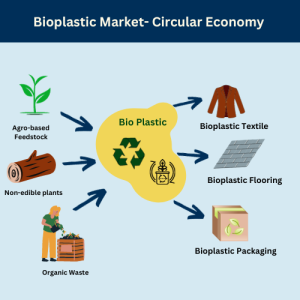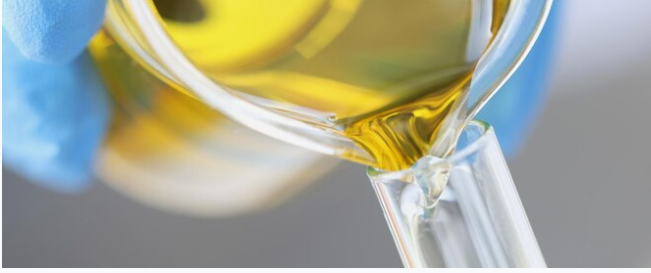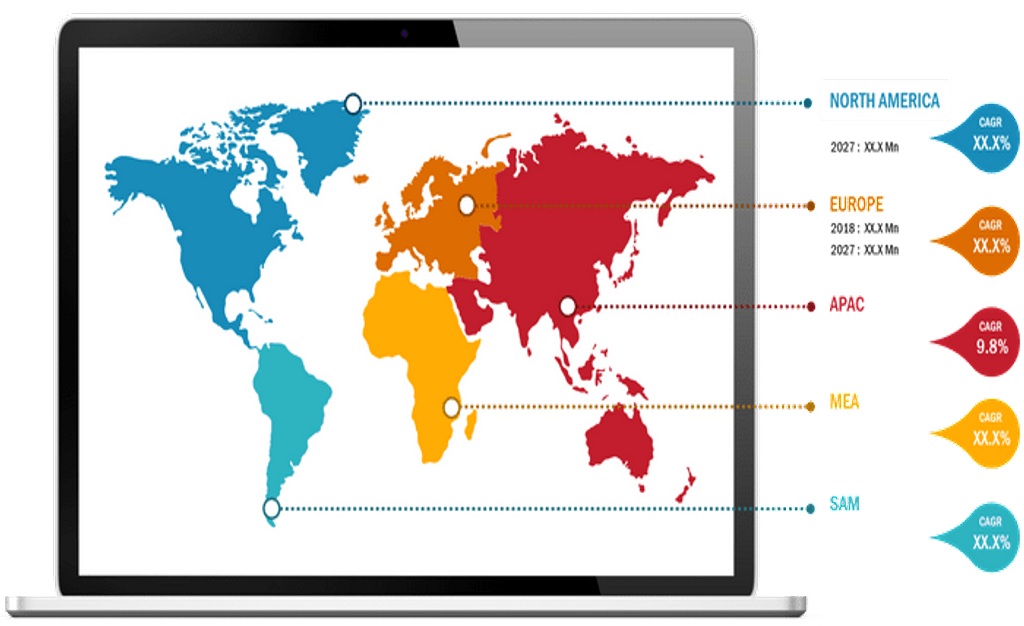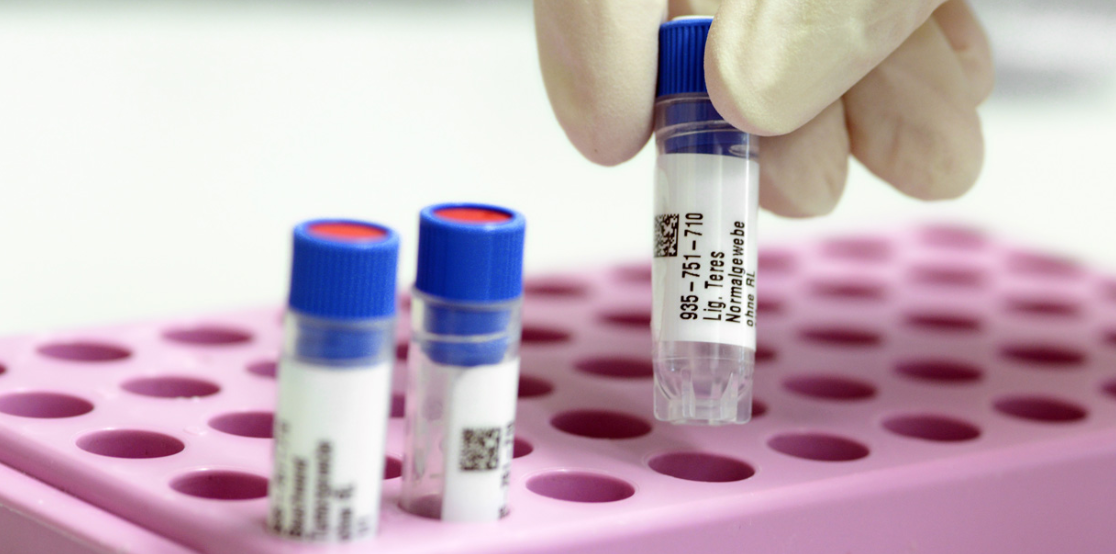100% Biodegradable, Edible packaging and plant-based bottles are some vows made by global brands foreseen to drive bio plastic market investment in the coming decade. The world is witnessing a climate change crisis motivating industries to reuse, recycle, and think of compostable for reduced carbon footprint. Shifting focus from both consumers and businesses to sustainable production has raised bio plastic market share in recent years. The remarkable growth in the biodegradable plastic market is driven by fast-moving consumer goods (FMCG), quick meals, and beverages which have led to escalating plastic production. Companies are striving to create a resilient business ecosystem in the context of propelling circular economy concerns.
Bioplastics are made from natural renewable resources such as sugarcane, soybeans, and corn. Starches and sugars extracted from natural resources are used for bio plastic production. Rising plastic dumps are calling for investment in R&D, technologies, and production of bio plastics before we drown in plastic oceans.
UN Environment Program (UNEP) report highlighted an estimated rise of 15% in the global carbon budget due to fossil-based plastic materials. Greenwashing further increases the complexity of this issue with brands claiming corn-plastic is compostable which doesn’t degrade as per the promises if they are left in oceans.
Renewable resources have gained traction of attention from industries addressing overall waste management. Government policies are being reshaped to promote eco-friendly materials. Substantial concerns such as climate change, and pollution are primary drivers of bio plastic research globally. Start-ups are trying to develop innovative materials that address biodegradability claims.
Bio plastics are organic materials that differ from biodegradable plastics that are formed using petroleum-based additives. However, there are some substantial concerns linked with biodegradable plastics leaving them subject to temperature conditions. On the other hand, bio-plastics are made of entire organic components leading to an edge over biodegradable plastic market alternatives in various industries addressing ecological issues.
The bio-plastic market is foreseen to grow from USD 5,799.8 million in 2021 to USD 13,806.1 million by 2028. This market is estimated to grow with a CAGR of 13.2% in 2021-2028.

Modeling Through Novel Bio plastic Market Niches with High ROIs
Bio plastic Market – A Green Credit Opportunity
The growing traction of sustainable fashion imposes pressure on textile companies to manage the environmental aspects of their production cycle. Biopolymers and bio-plastics are promising materials to be used in sustainable fabrication. The fashion industry undergoing a cusp of conversion in terms of material research and manufacturing to address its carbon footprint. Eco-friendly alternatives are explored by the key players instead of relying upon traditional synthetic fabrics.
Plant-based fibers are foreseen to open new opportunities for companies. However, huge capital costs and expensive production processes remain a restraining factor ahead of bio-plastic textile market players.
Synthetic textile materials such as polyester, nylon, and other traditional alternatives take hundreds of years to decompose. Bio-plastic decomposition is a matter of some months. They can reduce the natural impact of textile waste. Globally, the bio-plastic textile market is anticipated to gain a lucrative CAGR in the coming years.
Bio-plastic reduces reliance on fossil fuels and contributes to sustainable textile production. Despite wastewater treatment initiatives considerable amount of microfiber waste entering into rivers is increasing demand for bio-plastic alternatives due to green credits associated with them.
Bio Plastic Market – Home ware Fabrication Arsenal
Architecture is the next field where bio-plastics are expected to take a swift uptake in the future. This industry uses a high amount of bio-plastic after packaging. With many companies realizing the negative impact on climate, started to work on sustainable prospects. The usage of bio-plastics in interiors, 3D flooring, and terrazzo flooring already attracting the company’s attention. 3D printing technology further improves accuracy and enables architects to create their designs. Bio-plastics in terrazzo flooring are anticipated to remain the dominant segment in the coming years.
Thermoformable sheets are seen as a resource-efficient alternative to oil-based plastics. Beyond architecture, bio-plastics have entered into the homeware fabrication arena. Apart from flooring, the construction sector finds the use of bio-plastics as an additive in concrete making it lighter and improving its resistance than traditional counterparts.
Bio Plastic Market – Locks Nutrition of Quick Meals
Packaging remains the topmost end-use industry for bio-plastic applications. These constitute eco-friendly packaging material for cheese and dairy alternatives with a cost of 25% less than traditional options. Combining different layers of bio-plastics and wax coatings makes it possible to form an ideal packaging for quick meals. These packages insulate packed food from oxygen and humidity. Restraining the growth of bacteria and fungi, bio-plastic packaging ensures the quality of packaged food throughout its lifecycle.
Leading market players performing consistence scrutiny on improving bio-based plastics to do away with fossil-based plastic in food packaging. Technologies in designs and waste management recovery are being developed to promote the circularity of packaging in the food and beverage industry. Water vapor barrier technology is gaining traction of attention from bio-plastic packaging market players foreseen to give a second life to packaging solutions. Growing awareness of the harms of current plastics in packaging is the key driver of expanding the bio-plastic packaging market share.
Regional Landscape for Profitable Bio Plastic Pursuit
Asia Pacific bio-plastic market remains at the forefront with a major share and market size. This region held a lucrative potential worth USD 2535.91 million in 2022. China, South Korea, and India are leading countries in the APAC region showing promising prospects in bio-based polymers. China is the biggest market to target for the bio-plastic niche owing to the high vacancy of bio-plastic feedstock.
Fueled oil prices and fluctuating climate status also foster R&D in the bio-plastic market. Both private and public sector participants are foreseen to achieve novel bio-plastic milestones. China initiated a move towards sustainable niches by banning single-use plastics in 2021. Even though the pro-activeness of the Chinese government was grasped, regulation has created a void in the market. Bio-plastic market players can position their products into market gaps to address the void for environment-friendly products. Market players can expand their production capacity to meet demand and supply stability.
Europe follows the APAC region in terms of a second contributor to the bio-plastic market globally with 25% of the total bio-plastic market share. European Green Deal and Circular Economy Action Plan aims to generate a sustainable plastic economy. Significant attention is being paid by EU countries to accommodate bio-plastic in their law space. EU taxonomy, Plastic Carrier Bags Directives are foreseen to improve investment in the bio-plastic market.
North America is another lucrative bio-plastic market owing to the widely spread packaging industry. The majority of bio-plastic usage in these regions is done in the production of bags and bottles. The automotive industry in this region is the most advanced leading to substantial investments in R&D and new production methods. Bio-plastics and polylactic acids are novel niches being explored by automotive companies to bring an upward trajectory for the bio-plastic market in the coming decade.
Recent Moves from Bio Plastic Market Players
- Companies are switching to potato starch plastic as packaging solutions. This packaging takes six weeks to dissolve completely.
- US-based leading market players produced sustainable plastic from technology that uses starch, wood, and hemp resources.
- Companies are investing in bioplastic bricks that are sourced from plant-based compounds as the first step to their bio-plastic commitment.
- Australia-based companies primarily focused on the development of renewable bio-plastic packaging made from corn.
- UK-based Polymateria has collaborated with Imperial College of London to create new standards in polymer analysis and eco-toxicity. British Standard for Biodegradable Plastic (BSI PAS 9017) is a milestone development of his concert.
Recycling and Reuse- Only Breakthrough for Global Plastic Problem?
Plant-based bottles are made by combining sugarcane and oil-based plastics in 30-70 proportion amounts major bottle volume in North America. But it is hard to conclude that companies have cracked the rising menace of the plastic problem. Products that are branded under the tag of plant-based plastic still have the major share of traditional plastic contains that never decompose completely.
Leading F&B companies are under consistent pressure to invest in solutions that address plastic waste. However, so far companies have not discovered cheap and effective alternatives to single-use plastics. Bio-plastic packaging has been touted to resolve the plastic crisis. Coming up with cheap completely organic plastic is still a challenge ahead of bio-plastic market players.
Industrial ecologists acknowledge that the development of bio-plastics is not the only way to address the plastic problem. Recycling and reuse are conveniences for circular economy overhauls and should be the next priority. With the skyrocketing use of plastic, waste is foreseen to be estimated to increase three-fold by 2040. Small-scale changes and the introduction of bio-plastics should accompany the reuse and recycle focus.
Companies need to eliminate plastic wherever possible and replace it with compostable alternatives. ‘Extended Producer Obligation’ is gaining traction of attention across the beverage industry where brands and importers of brands are expected to take responsibility for handling plastic throughout the product lifecycle.
There are massive challenges ahead of bio-plastic market participants as it’s hard to replace traditional plastic content polluting the planet for many years. However, it has promising potential for R&D and business opportunities in the long term. New approaches as required to design plastic products and think of compostable mechanisms. Innovative small-scale and mid-scale companies are foreseen to scale up with new plastic technologies.
The lethargy of relying on the production of virgin resin pulls companies back from recycling and reuse policies. Companies need to invest in the entire decomposition mechanism of bio-plastic along with improving materials for a durable competitive advantage in this market.
Due to the complexity and size of the worldwide plastic menace, it can often feel unresolved. However, it’s crucial to recognize the efforts of bio-plastic market players that come up with solutions for environmental cleanup. Startups and mid-scale companies have come up with solutions that address single-use plastic pollution. On proven technologies and material efficiencies, the bio-plastic market pursuit has been foreseen to present a high rate of returns on investments.



